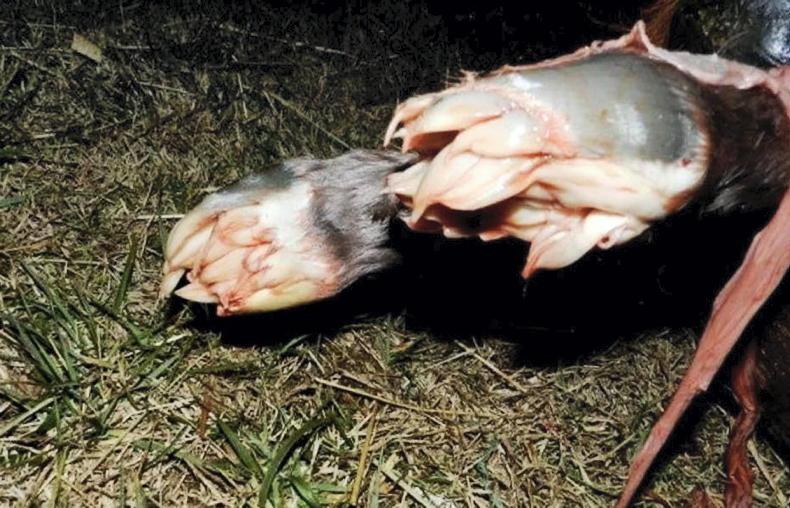AS journalists, we are mostly encouraged not to write in the first person, but when the subject of the article is what’s just happened to you, then I think first-hand experience can always be valuable.
This morning, my pride and joy Teofilo mare aborted her foal at seven months gestation. A seemingly perfect little filly, lost. After the initial shock and upset, what remained was the question of why?
Abortion is defined as the delivery of a dead foetus less than 320 days into gestation, i.e. termination of pregnancy before the foal can survive outside the uterus. The overall rate of abortion in the horse population varies from 5-15%. If abortion occurs before four months it is rarely noticed, as the foetus is too small.
Abortions can be caused by infectious or non-infectious factors. My mare was vaccinated against Equine Herpes Virus (EHV) and was on the reproductive vet-prescribed Regumate and aspirin. I’m a fanatic over nutrition, so she had everything she needed in that sense, plus a huge pen and plentiful turn-out with one other in-foal mare. So what caused the abortion?
There are many infectious and non-infectious factors and here is a list to be aware of:
Infectious factors
Non-infectious
What are the first things you should do if your mare aborts?
Firstly, it’s best to isolate your mare. She may be infectious and may be a risk to other mares that are in-foal. It’s a really good idea to retain the aborted foetus and placenta (afterbirth) for the vet to examine and then call the vet.
What will the vet do?
This was a useful guide I found from an equine vet practice when searching what to expect as I waited for my vet to arrive. It's always best to consult your own vet at all times in these instances and theirs is the advice you should follow on the day.
Take a history
The vet may ask a number of questions relating to the mare’s reproductive history, e.g. stage of pregnancy, vaccination status, number of in-foal mares on the premises, health of mare, previous foaling history, clinical signs of mare before or after mare aborted, general feeding and management of mare. This will give clues to the reason for the abortion and will also be needed to forward to the lab with samples of the aborted foetus.
Examination of mare
Full clinical exam will determine whether the mare is sick and requires treatment. Internal exam will be carried out to check for uterine tears, retained placenta, endometritis and presence of a second foal (twins).
Examination of aborted foetus and placenta
The appearance of the foetus and placenta can provide vital clues to the cause of the abortion, e.g. fungal infections produce white plaques within the placenta, EHV infections produce jaundiced foetus with necrotic spots within the liver. Full examination of the placenta will ensure that there is no retained placenta still present within the uterus. Retained placenta is commonly seen in cases of abortion.
So far, thankfully, my mare seems to be doing okay following the abortion, the vet has seen her and medication has been administered to keep her pain-free and well. My vet recommended sending the foal to the Irish Equine Centre (IEC). As I write, my husband is driving the aborted filly down to the clinic in Naas for post-mortem.
Why have a post-mortem done?
Having a post-mortem done can help your own mind settle, but also, according to IEC, the results will be vital not only in diagnosing the cause of the abortion, but for recommending the correct treatment for the mare, risk assessment of other mares on the premises and also predicting the breeding future of the affected mare.
Free service
The Pathology Unit of the Irish Equine Centre provides a round the clock service to horse owners and veterinary surgeons and they believe it is very important for breeders to know that the IEC undertakes approximately 600 post-mortem examinations each year of which circa 70% are carried out free of charge to the horse owner. This free service (for foetuses and foals under two weeks of age) is possible because of the financial support received by the IEC each year from the Irish Foal Levy. The vast majority of the IEC’s annual Foal Levy grant is allocated to the Pathology Unit to facilitate this service.
Post-mortem examination subjects can be accepted at the centre 24 hours per day, seven days a week. Specimen drop-off out of hours can be arranged by calling the IEC during office hours and at weekends using the on-call service. The on-call Pathology contact number is 087-995 9195.
Initial findings are relayed to the referring veterinary surgeon within 24-48 hours of receipt of the case. The written report can take longer.
This article is based on my own experience, I'm not a vet, I'm a breeder. As a breeder, the loss of a foal that’s often hard fought for, can be heartbreaking: lots of emotions and questions may be faced. It’s important to remember to take guidance from your vet, be kind to yourself, and to acknowledge the loss of the foal and all the hopes and dreams that went with it.
Update: The IEC has since confirmed cord torsion was the cause of our filly’s death and there was nothing anyone could have done.


 This is a subscriber-only article
This is a subscriber-only article
 It looks like you're browsing in private mode
It looks like you're browsing in private mode










SHARING OPTIONS: